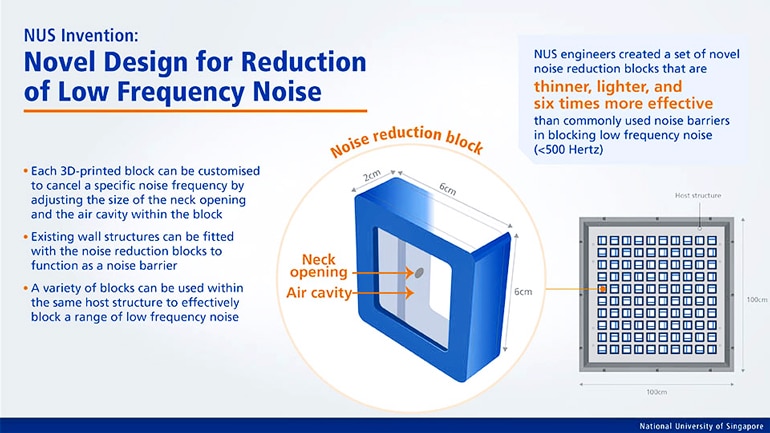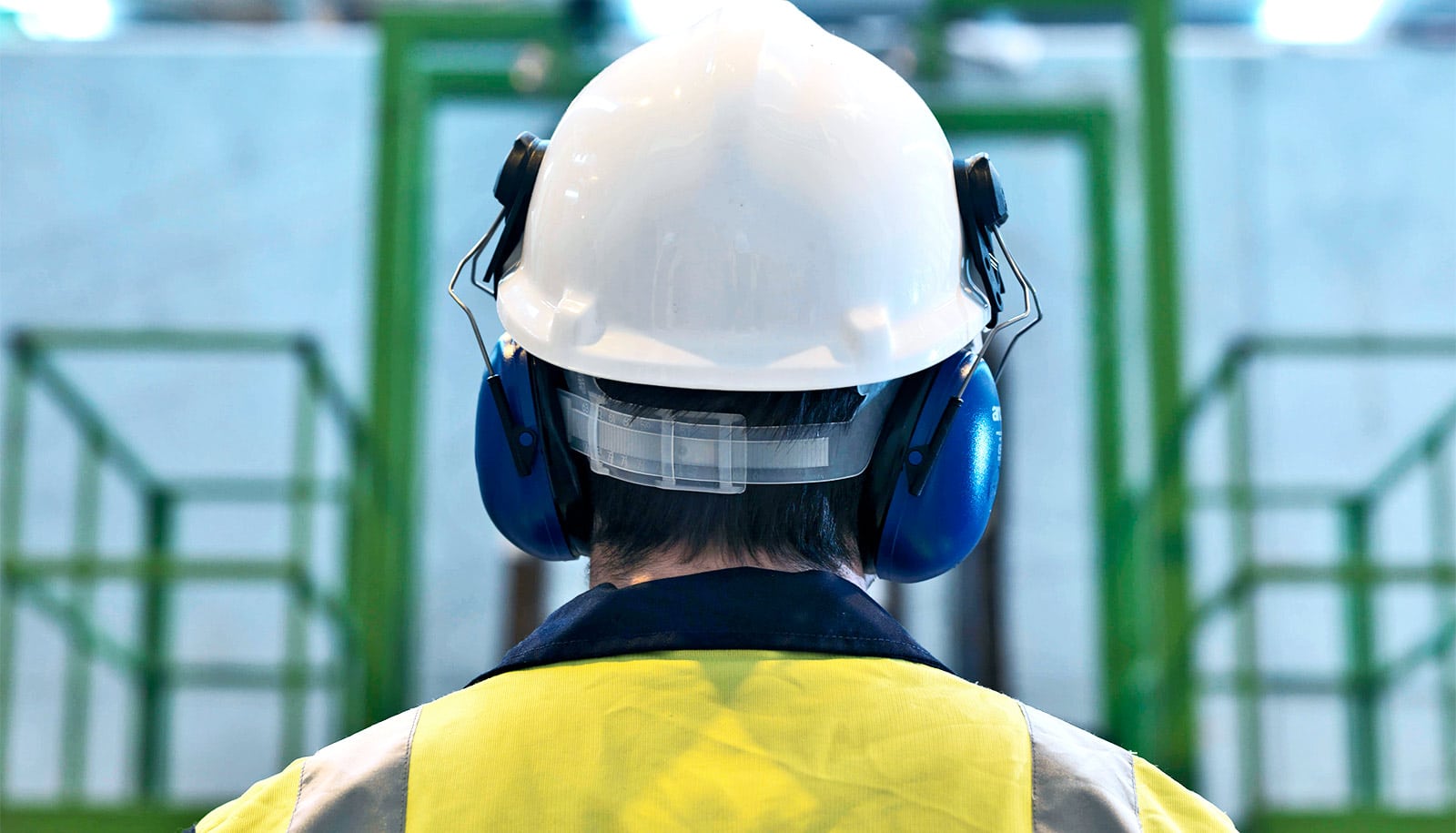Researchers have created a new set of customizable noise cancelling blocks.
Low frequency noise (500 Hertz and lower) from various sources such as construction machinery and aircraft, is a form of environmental noise pollution in urban environments. The noise transmits over long distances and disturbs the surrounding area.
Low frequency noise is also known to trigger several negative physiological reactions, such as changes to blood pressure, vertigo, and breathing difficulties, even when the noise is not audible.
Currently, most commercially available noise cancelling devices and structures are only effective in reducing high frequency noise, while low frequency noise continues to penetrate.

Adjusting the size of the air cavity and the neck opening within the block can customize the specific noise frequency that each 3D-printed block cancels. The blocks can then be slotted into a grid-like host structure to function as a noise barrier.
The team’s experiments showed that the modular design was capable of cancelling low frequency noise below 500 Hertz by an average of 31 decibels. This is six times more effective than other commonly used noise barriers and the modular design means the barrier is lighter and thinner than commercially available devices. Using this modular design, the engineers were able to better control the properties of the noise barrier and produce them affordably.
“These noise reduction blocks can be easily incorporated as part of existing wall structures, and it would not be necessary to build a host structure from scratch in order to implement the sound barrier. Such a modular design also means that a variety of blocks targeting different noise frequencies can be used within the same host structure to effectively block a range of low frequency noise,” explains Lee Heow Pueh, associate professor of mechanical engineering at the National University of Singapore.
The team also developed “Noise Explorer,” a mobile application capable of accurately tracking noise data based on a new method of calibrating the microphones of smartphones. Unlike existing noise monitoring apps, Noise Explorer measured sound pressure levels and frequencies with an accuracy of less than one decibel for 99.7 percent of the measurements in the team’s experiments.
An immediate application of Noise Explorer is for crowdsourcing noise data to help authorities identify and mitigate the source of noise more effectively. Other potential uses include tracking one’s exposure to noise over a period of time and coupling with artificial intelligence for condition monitoring of devices and equipment.
“A customizable modular noise barrier, together with a handy and accurate noise meter, will enable authorities and regulators to tailor their noise management strategies effectively to the nature of the noise transmitting in an area. In this way, the people living and working in the area could enjoy greater comfort,” Lee says.
Lee mentions that his team is in discussions with a local company to further develop and commercialize the noise attenuating blocks. They are also looking into improving the aesthetics of the blocks such that they can be seamlessly integrated into a building’s architectural design.
The work appears in the journal Acoustics.
Source: National University of Singapore



